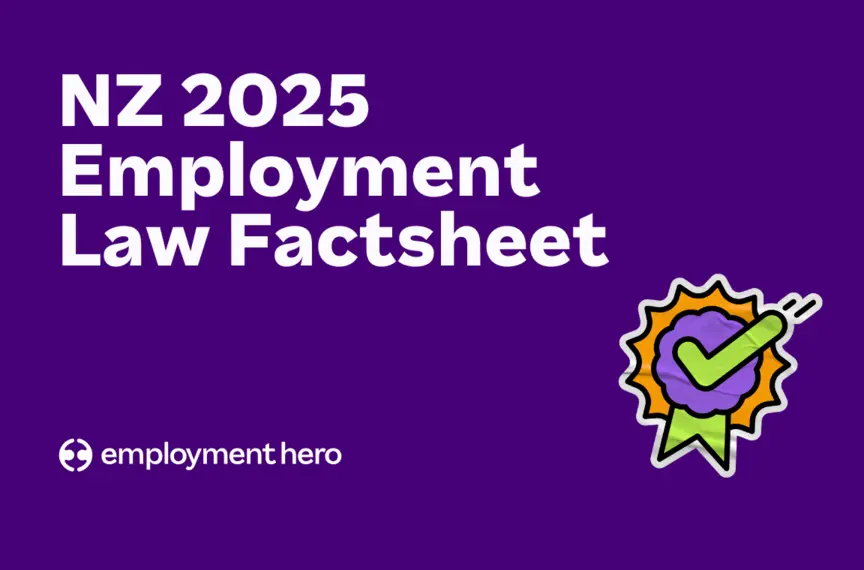Employer’s guide to the redundancy process
Published
Employer’s guide to the redundancy process
Published
Redundancy in itself is not a controversial move for a business. No employer wants to make an employee redundant; it is the unfortunate reality that sometimes redundancies are a necessary evil of the business world. Times change, circumstances change, and – as a result – businesses are forced to change in order to adapt.
If you, as an employer or leader, find yourself in a position where redundancies are the only option, our thoughts are with you. Download our guide for information on compliance as it relates to redundancies, common redundancy mistakes to avoid and how to lead with kindness through the redundancy process. As always, our information is designed as guidance only, and is not a substitute for legal advice. We’d always advise that you also seek legal advice in situations such as these.
This guide to redundancy covers:
- What is redundancy?
- Alternatives to redundancy
- The laws and regulations behind redundancy in NZ
- Redundancy the right way
- Common redundancy mistakes to avoid
What is the standard redundancy process in New Zealand?
The redundancy process in New Zealand is designed to be entered into carefully. At its heart, Employment New Zealand’s guidelines require this of employers –
“An employer must follow a proper and fair process and all redeployment options exhausted before any positions are made redundant. The reasons for the redundancy must be genuine.”
Should a redundancy situation prove to be the only option, employers can’t quickly decide to make employees redundant – they must follow a specific workplace change process, that includes setting up a business case, presenting a workplace change proposal to employees, beginning a consultation process and gathering feedback. Our guide goes into the complete process – download it through the form on this page.
Legal framework and compliance requirements for redundancy
In New Zealand the redundancy process is governed by principles of good faith outlined in employment law. Your obligations are established through the Employment Relations Act 2000 and interpretations from case law. The core requirement is to act as a fair and reasonable employer throughout the entire process.
Employment Relations Act 2000 obligations
Under the Act, employers must act in good faith. This means you must be open and honest with your employees about the proposed changes. Your key obligations include:
- Providing employees with all relevant information about the proposed redundancy.
- Giving them a reasonable opportunity to provide feedback on the proposal.
- Genuinely considering their feedback before making a final decision.
Personal grievance risk management
A flawed redundancy process can lead to personal grievance claims for unjustified dismissal. To minimise this risk, you should ensure the redundancy is for a genuine business reason and that you have followed a fair process. Failure to consult properly or making a decision before considering employee feedback are common grounds for a successful claim.
WorkSafe and health & safety considerations during change
Major organisational change like a restructure can create significant stress and uncertainty for all employees, not just those directly affected. Under the Health and Safety at Work Act 2015 you have a duty to manage psychosocial risks. This includes supporting the mental wellbeing of your team during the transition and ensuring a safe work environment for everyone.
Genuine business reasons vs performance-based dismissals
It is crucial to understand the difference between redundancy and dismissal for poor performance.
- Redundancy is about the role no longer being needed due to genuine business reasons. It is not about the person in the role or their performance.
- Performance-based dismissal relates to an employee’s failure to meet the requirements of their job. This requires a separate performance management process.
Using redundancy to manage a performance issue is not lawful and can lead to a personal grievance.
Establishing legitimate redundancy grounds
A redundancy must be based on genuine commercial reasons. Examples of potential valid grounds include restructuring the business to improve efficiency, introducing new technology that makes a role obsolete or closing down part of the business.
Avoiding discriminatory selection practices
If you need to select between employees for a reduced number of roles you must use a fair and objective selection process. The criteria should be transparent and based on skills, qualifications and experience relevant to the remaining roles. Using discriminatory reasons such as age, gender or union membership is unlawful.
Documentation requirements for business justification
Keep detailed records of your entire process. This includes the business case for the change, consultation meeting minutes, employee feedback and the rationale for your final decision. This paperwork is essential evidence that you acted fairly and had genuine reasons for the redundancy if your decision is challenged.
Consultation process and employee rights during redundancy
Consultation is a mandatory and critical part of the redundancy process. It is a two-way conversation – not just a briefing.
Mandatory consultation timeline and procedures
There is no legally defined minimum timeframe for consultation. It must be a reasonable period that allows employees enough time to understand the proposal, seek advice and provide considered feedback. Rushing the process is a common mistake that can make a dismissal unjustified. You must clearly outline the steps and timeline to your employees at the start.
Employee right to be heard and provide feedback
Employees have a legal right to comment on the proposal before you make a final decision. This includes providing feedback on the business reasons for the change, the proposed new structure and any potential alternatives to redundancy. You are legally obligated to genuinely consider this feedback with an open mind.
Alternative role consideration and redeployment options
As part of the process, you must consider if there are any suitable alternative roles for the affected employee within the business. Redeployment should be offered if a similar role exists. An employee is not required to accept an offer of redeployment.
How does an employment agreement impact a redundancy?
Employment agreements stipulate the terms that an employer has set with an employee on commencement of their working relationship. With that in mind, the employment agreement may have an impact on the decisions around redundancy – or more likely, any alternatives to redundancy.
For example, if an employer is considering reducing overtime or lowering work hours instead of redundancy, they should carefully consult the employment agreements. They may be breaching specific conditions.
Likewise, in the event of a redundancy, an employment agreement may already include conditions that the employer should adhere to, such as any redundancy pay given by the company or a specified period of notice.
However, it’s important to note that an employment agreement cannot override the legal rights of the employee when it comes to the redundancy process. Employers should still ensure that they’re staying compliant and follow Employment New Zealand’s guidelines.
Do I have to pay redundancy compensation?
There is no legal obligation in New Zealand employment law for employers to pay out redundancy compensation to an employee who has been made redundant. However, a company could offer compensation if they choose to. If so, they should ensure that redundancy payments are specified in the employment contract with the employee.
What is a reasonable notice period for a redundancy?
When it comes to a notice period for employees who are made redundant, if there is no specific clause detailed in the employment contract or agreement, reasonable notice must be given in good faith. The definition of a reasonable notice period depends on a number of factors, such as the reason for redundancy, the employee’s length of service and the amount of compensation being paid, if any.
How can an employer handle redundancy with sensitivity?
Once you know how to compliantly make your staff redundant, it’s time to start thinking about how to manage the emotions of the redundancy situation. This may put them under financial pressure, or leave them feeling stressed and in doubt of their professional future.
Redundancies can be a very emotionally-charged situation – it’s unreasonable to assume that people will be able to maintain a stiff upper lip when they are informed that they’re being made redundant.
Instead, leaders should accept that many employees will naturally be upset by redundancies. They should take every measure to reassure them and be transparent with them about the situation and what to expect. They should also go the extra mile to help them in their next career step (e.g. by offering time off to interview elsewhere).
Post-redundancy support and transition management
Your duty of care extends beyond the final decision. Providing support demonstrates good faith and helps protect your employer brand.
Wellbeing support
Offering wellbeing support like an Employee Assistance Program can make a significant difference for departing employees. It demonstrates a good level of care by you as an employer.
Supporting workplace morale
Redundancy affects the staff who stay too. They may feel anxious, guilty or overworked. Communicate openly with the remaining team about the future of the business and their roles in it. Focus on rebuilding morale and providing them with the support they need to move forward.
Final pay calculations and entitlement payouts
Final pay must be paid on the employee’s last day of employment unless otherwise agreed. It must include all wages owed payment for any unused annual leave and any other entitlements owed under the employment agreement, such as pay for alternative holidays or notice.
Protecting the employment relationship and ensuring fair process
Managing redundancy correctly is not just about legal compliance – it’s about maintaining your reputation as a good employer. A fair and transparent process protects your business from legal risks, preserves morale among remaining staff and allows departing employees to leave with dignity. By acting in good faith at every step, you can navigate this difficult change with integrity.
Our guide will support you in making the right choices for your business, even when they’re difficult ones.
The information in this article is current as at 30 October 2025, and has been prepared by Employment Hero Pty Ltd (ABN 11 160 047 709) and its related bodies corporate (Employment Hero). The views expressed in this article are general information only, are provided in good faith to assist employers and their employees, and should not be relied on as professional advice. Some information is based on data supplied by third parties. While such data is believed to be accurate, it has not been independently verified and no warranties are given that it is complete, accurate, up to date or fit for the purpose for which it is required. Employment Hero does not accept responsibility for any inaccuracy in such data and is not liable for any loss or damages arising directly or indirectly as a result of reliance on, use of or inability to use any information provided in this article. You should undertake your own research and seek professional advice before making any decisions or relying on the information in this article.
Register for the guide
Related Resources
-
 Read more: Employment Agreement Checklist
Read more: Employment Agreement ChecklistEmployment Agreement Checklist
Creating your next employment contract? Download our free checklist to make sure you’re covering everything you need before onboarding.
-
 Read more: Employment law updates 2025
Read more: Employment law updates 2025Employment law updates 2025
Keep your business up-to-date with the latest changes in NZ employment law. Here’s what you need to know about the…
-
 Read more: Redundancy notice letter free template
Read more: Redundancy notice letter free templateRedundancy notice letter free template
Download your copy of the redundancy notice letter free template from Employment Law Experts now.





















